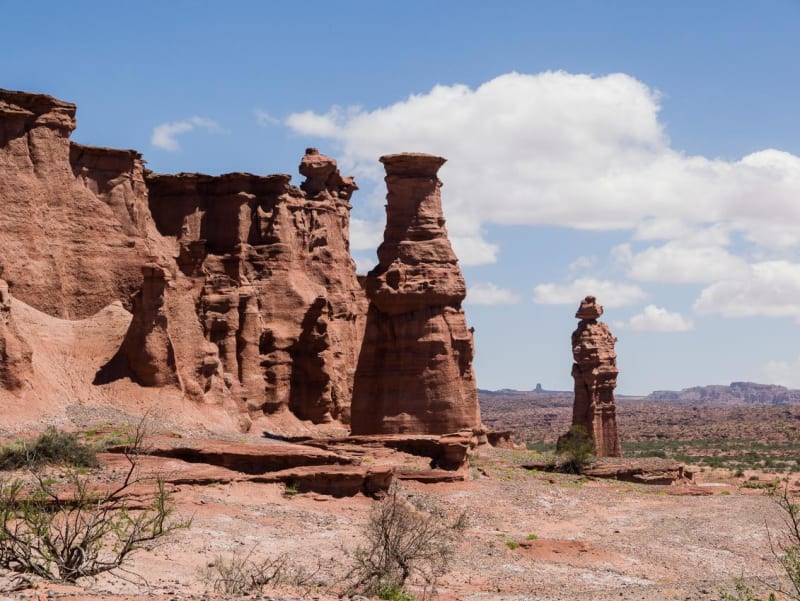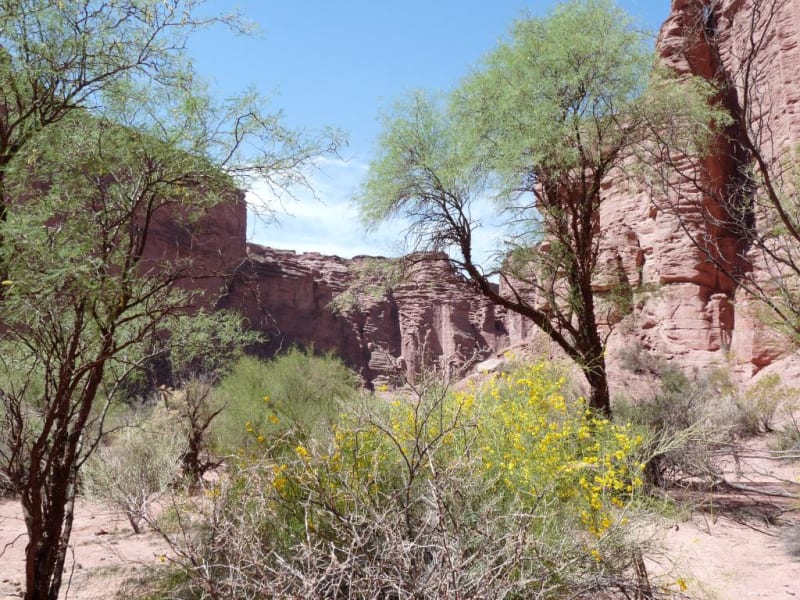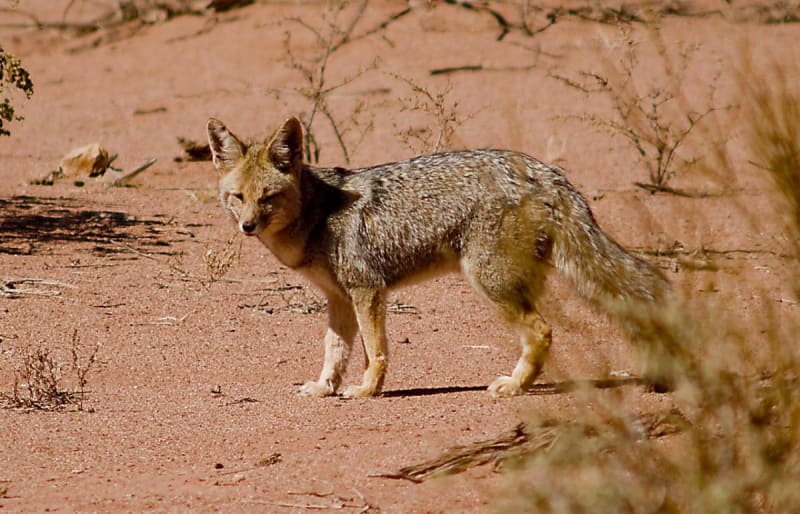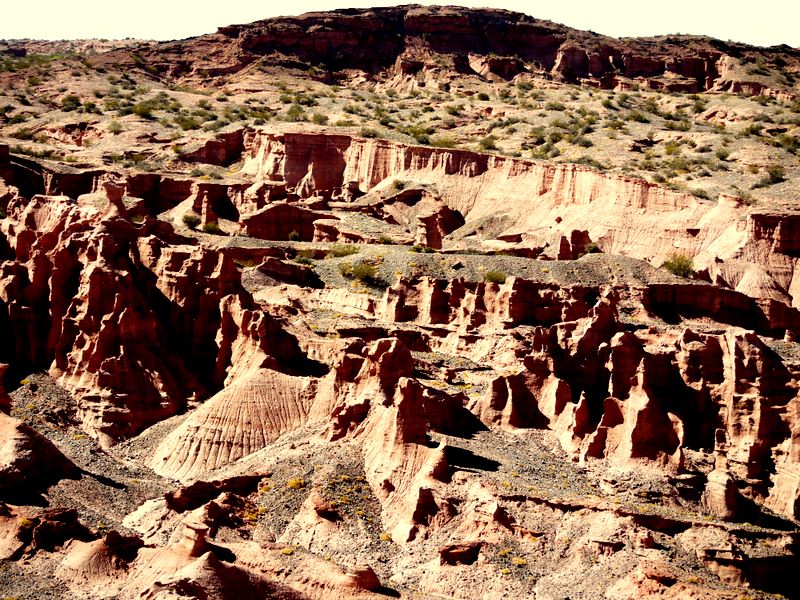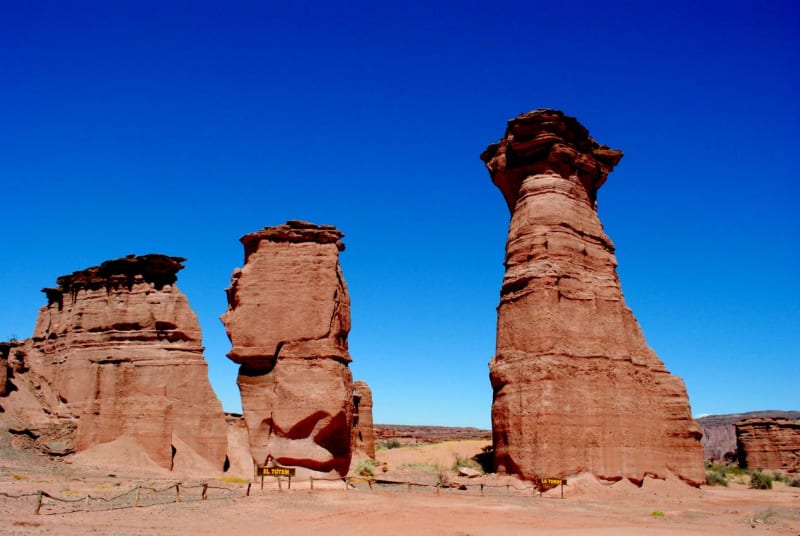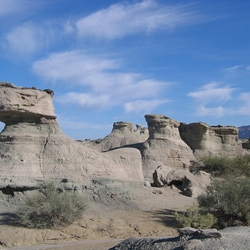Talampaya National Park
Talampaya is a national park of Argentina, located in the province of La Rioja. Back in 1975, a nature reserve was created on this territory of 2,150 km2, and in 1997 it received the status of a national park. It was founded to preserve the territory for archaeological and paleontological excavations. In 2000, the park became part of the UNESCO World Heritage Site.
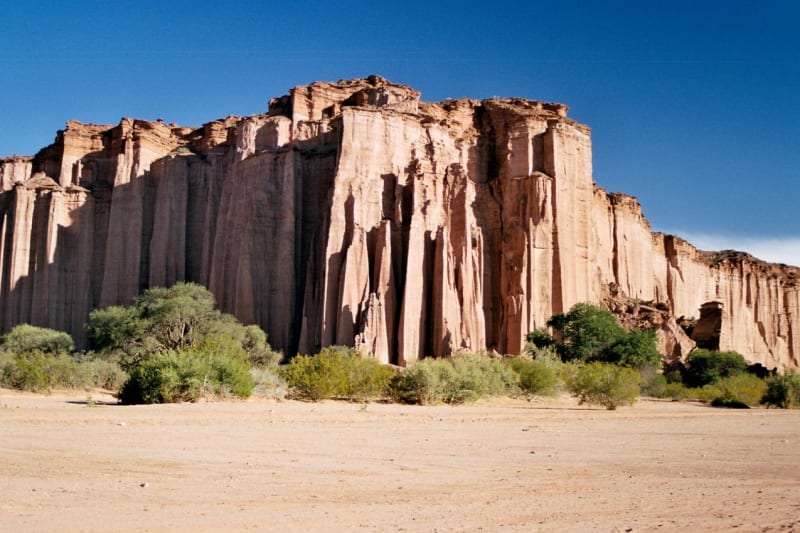
Talampaya Park lies in a valley among mountain ranges, and rains and winds have been working on its relief for millions of years. Heavy rains occur in this area in the summer, and the strongest winds blow in the spring. The maximum temperature in the park reaches +50 °C, and the minimum is 9 °C.
Archaeological excavations in the park
In the national park, drawings of animals and people can be found on rocks and large boulders - this gives the area mystery and uniqueness. In particular, there are a lot of strange stones in a place called "The Lost City". Archaeological sites have been discovered on the site of the dried-up Talampaya riverbed, suggesting that dinosaurs lived here millions of years ago. Although the fossils found are in many ways inferior to the remains found in Ichigualasto, nevertheless, the local nature makes up for this disadvantage. No less interesting will be the Talampaya gorge, whose stone walls rise to a height of 143 meters.
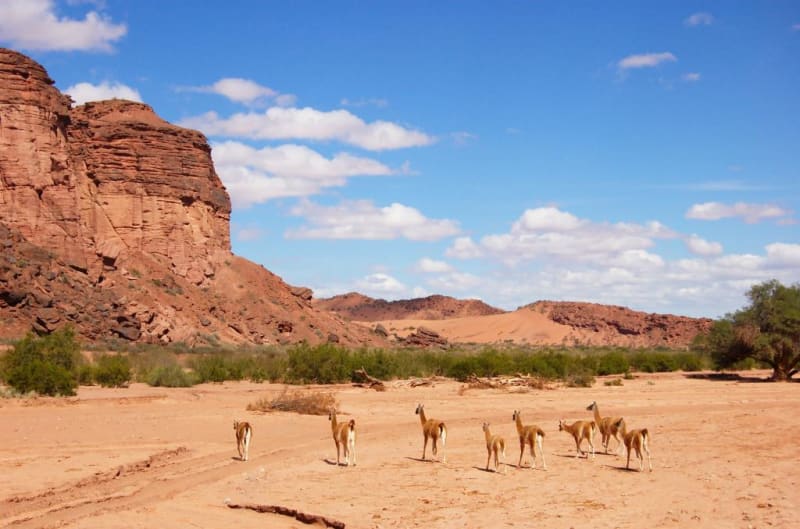
The park has a botanical garden, which contains the rarest plants of the territory. Shrubs and cacti predominate among the vegetation in Talampaya. Trees can also be seen mainly near the banks of rivers. There are many species among the vegetation that can't be found anywhere else.
Fauna of Talampaya Park
A large number of guanacos walk in Talampaya Park. They belong to the camelidae family and in appearance resemble a cross between a deer and an antelope with a long neck. It is also worth noting the Patagonian hare or the Patagonian pig. The skin of this hare is different - it is gray-black on top and white on the bottom. Besides them, foxes and Andean condors are often found in the park. The condor is one of the largest birds in the Western Hemisphere, it resembles a giant vulture with shiny black feathers, a collar with white feathers around the neck and wide white borders on the wings.
To preserve the splendor of Talampaya Park in its original form, the park administration has restricted access to the park. Guests are welcome here, but they can only walk with experienced guides. Before the tour, it is necessary to take a water supply with you, as there are no suitable drinking sources in the park.
